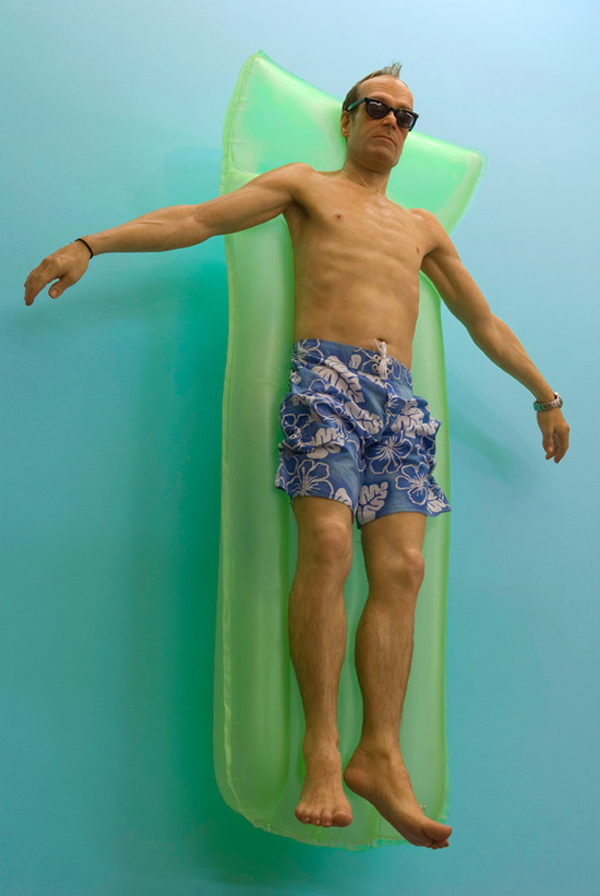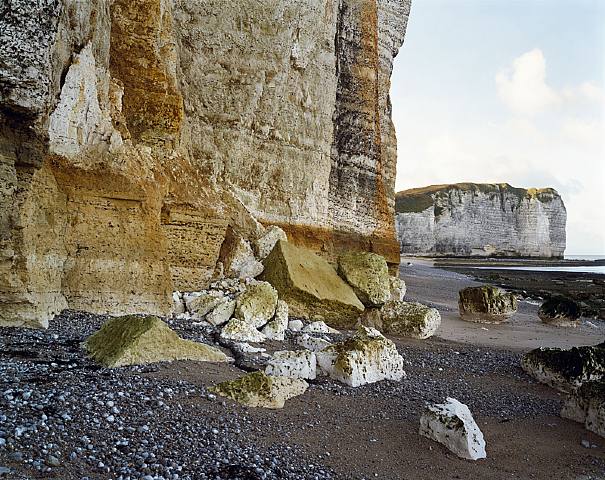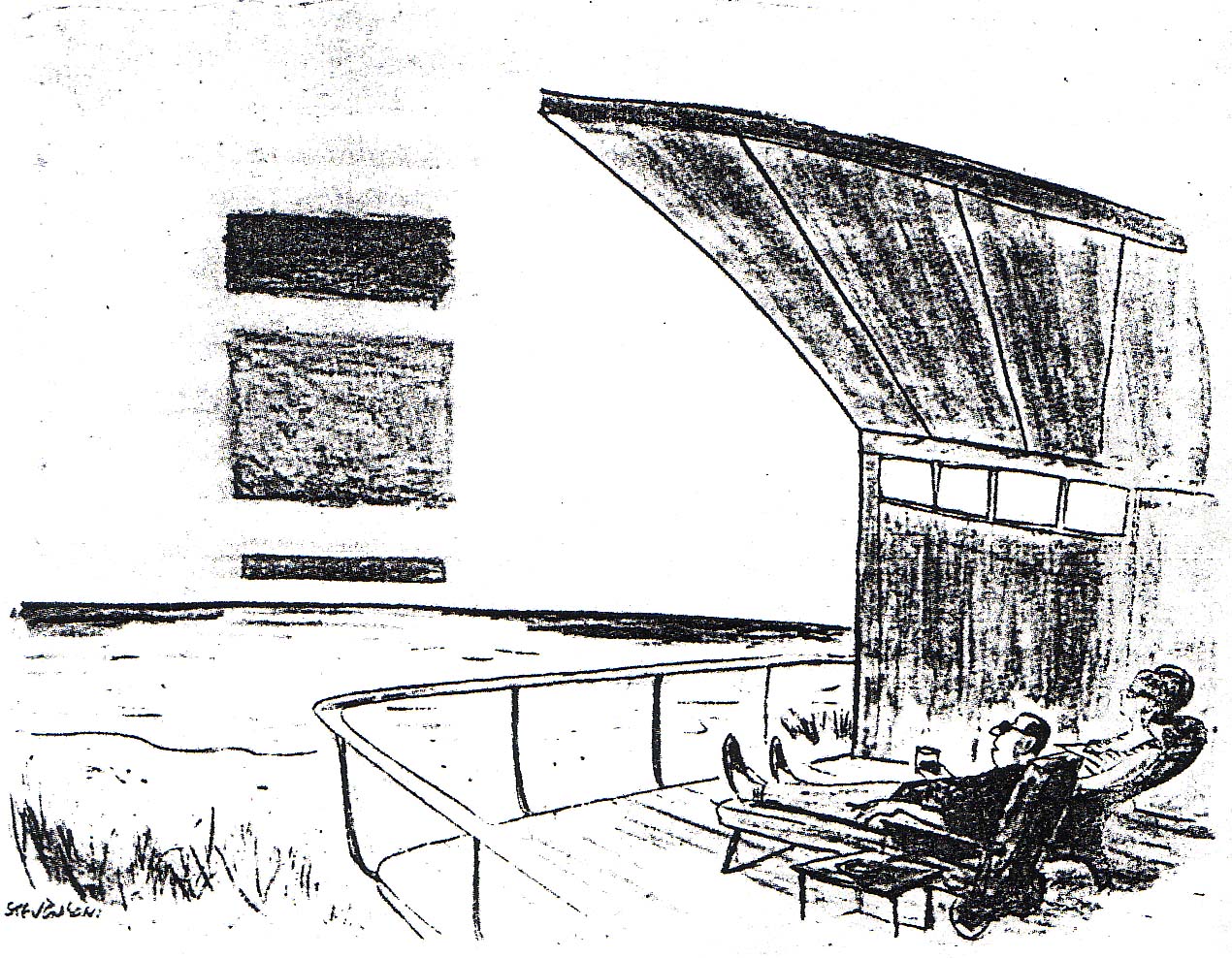Purpose and contrivance lurks behind all that realism… The key piece here, shown high up on the wall, features a man in dark glasses floating on a lilo. He’s wearing blue bermudas and his skin is shiny with suntan oil. Like the giant couple upstairs, he seems to be on holiday, and ought to be exuding relaxation and contentment. But he isn’t. Instead his mood is anxious and expectant. Because his arms are outstretched to catch the sun, because he’s hanging on the wall, rather than bobbing about in the water, because his skin is glistening with sweat, his similarity to a crucified Christ hits you immediately.
These obvious religious references appear throughout the show. …Youth shows us a black teenager lifting up his T-shirt to reveal a bleeding knife wound positioned exactly where the Roman centurion stuck his spear into Jesus. Apparently, Mueck had in mind that marvellous image by Caravaggio of the apostle Thomas thrusting his finger into Christ’s wound because he doubts that Jesus is back from the dead. …Woman with Shopping is an updated Mother and Child. And the giant chicken hanging from the roof, called Still Life, is another surrogate crucifixion, in the spirit of Rembrandt’s famous Carcass of an Ox. …
Surprisingly, perhaps, the effect of these recurrent religious references is not to make the exhibition itself feel overtly religious. It doesn’t. Instead, the transformed biblical narratives seem to feed back the other way: back into the Bible, where they make those portentous texts feel less grand, more human, closer to us. How marvellous to see a contemporary artist dealing so inventively with such ancient themes. Contemporary art doesn’t get much more original or more thrilling than this.
Waldemar Januszczak on Ron Mueck (showing at the Fondation Cartier pour l’art contemporain, Paris, until 29th Sept) in the Sunday Times Culture, 21st April.
Header image: Drift, 2009, by Ron Mueck.



